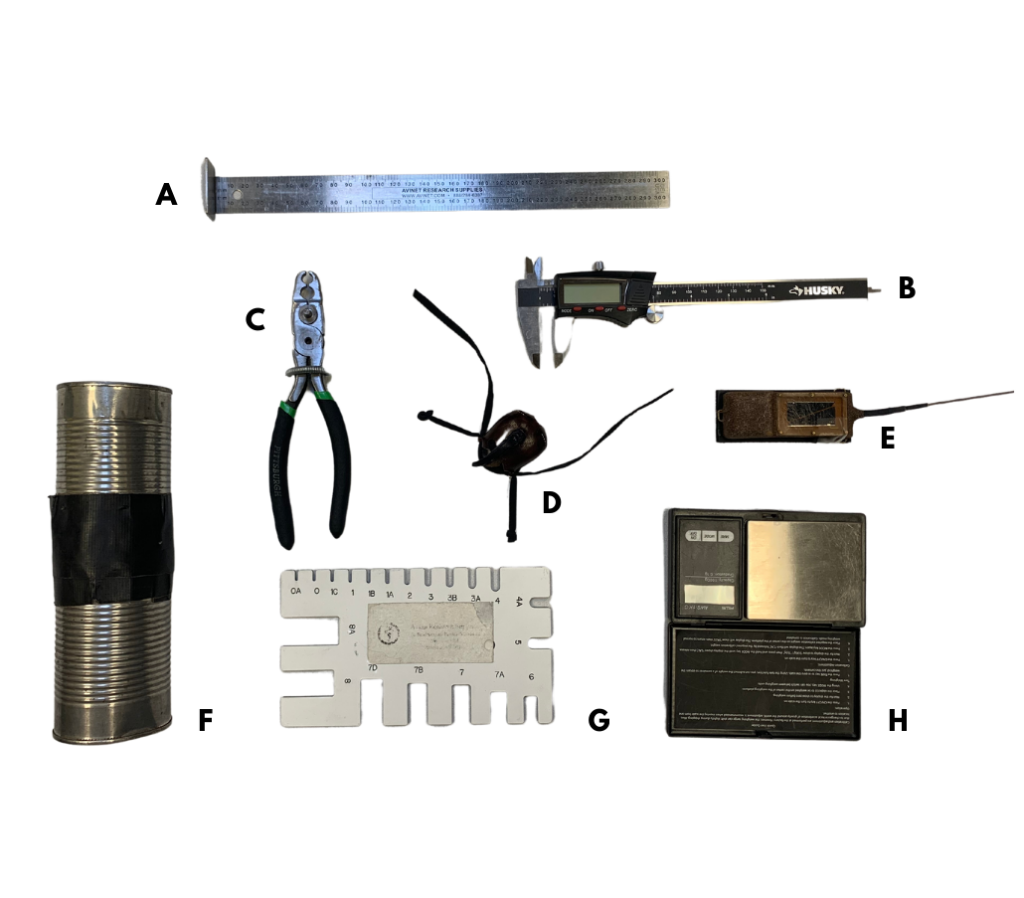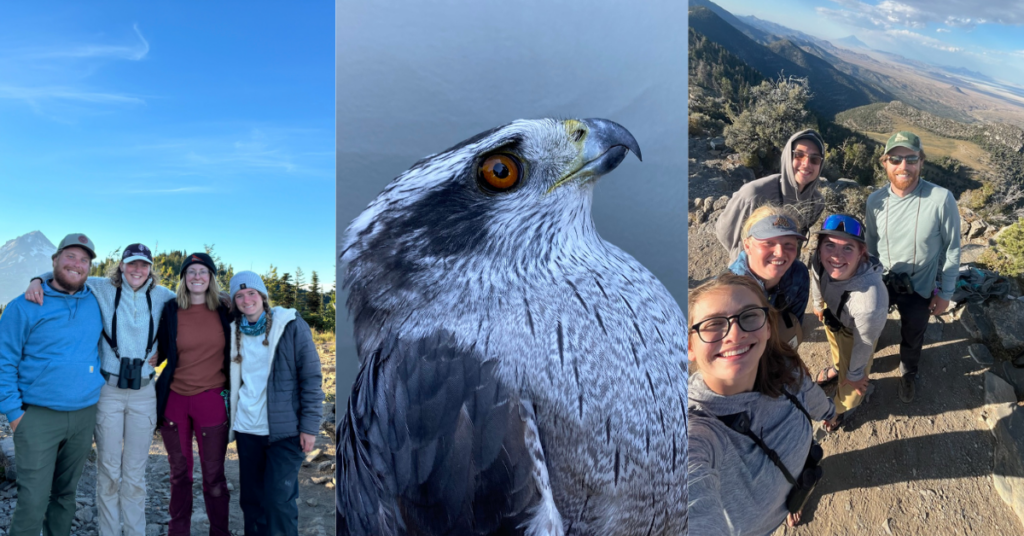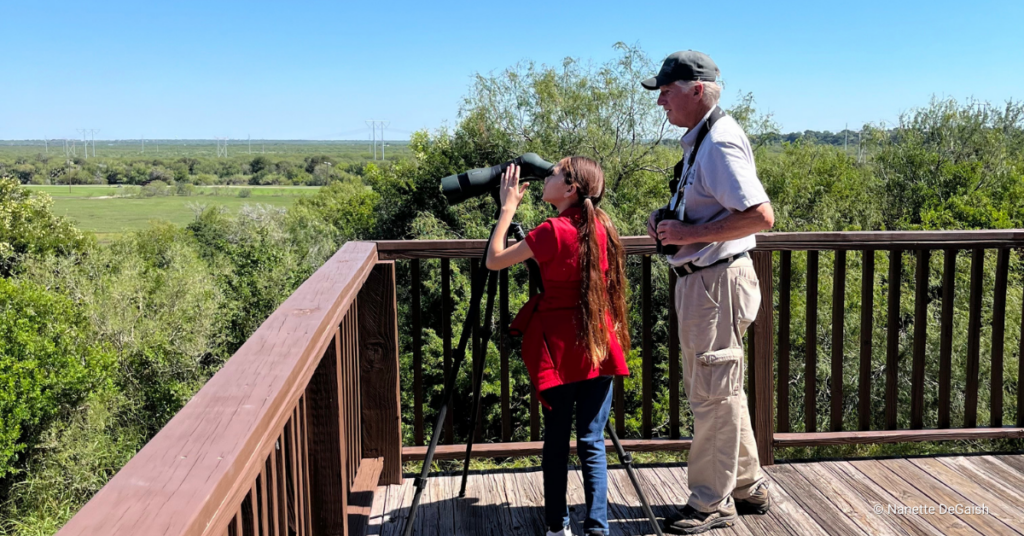Birds have been banded for science since the 1800s. When a band is re-sighted or recovered, scientists learn how long that bird has lived (longevity), where it came from, and where it moved to. HawkWatch International has banded over one hundred thousand raptors since the 80s. Re-sight and recovery reports from our bands have allowed us to better understand how long certain individuals have lived and provide a better understanding of where the birds we count originate from, move through during migration, and/or where they spend the winter months.
It is important to note that not everyone can band birds. Banders are required to apply for and maintain permits at both the State and Federal levels. Permits are only issued if an individual or organization can provide a scientific rationale as to why they need to band birds and they must demonstrate that they have the knowledge and expertise to be permitted.
So what does the banding process look like? First, a metal USGS band with a unique 9-digit code is placed on their leg. Depending on the study, an alpha-numeric color band may be placed on the opposite leg to increase the likelihood that the bird is re-sighted in the future. Next, the individual is sexed and aged using a combination of characteristics including morphometrics and plumage. Measurements such as mass, standard tail, wing chord, and wing-pit fat are typically collected. We also keep an eye out for parasites such as lice or flat flies which are another indicator of the individual’s health. Depending on the focus of the research we may collect a feather or blood sample to run lab tests on, or place a transmitter on the bird. Lastly, we take standardized photos of the ventral and dorsal sides of one of the wings and the topside of the tail. Photo documentation allows us to document the bird’s plumage and provides us with a digital record that can be referenced and studied in the future. The entire banding process can take anywhere from five to thirty minutes, depending on the specifics of the data being collected.
Below is a selection of some of the tools our team uses during the banding process for our various research projects. Keep reading to learn the use of each of these tools.

A Wing Rule: Used to measure wing chord (most prominent point of the wrist joint to the most prominent point of the longest primary feather) and tail measurements.
B Digital Calipers: The adjustable “jaws” are used to take a multitude of measurements such as culmen(the upper ridge of a bird’s beak) or hallux (their tow) length.
C Banding Pliers: Pliers allow the bander to achieve a perfect fit by safely closing the metal USGS banding rings around a bird’s leg.
D Kestrel Hood: Hoods are used to calm birds down during handling. The hood takes away visual stimulation which helps the bird relax.
E Transmitter: We can track raptors’ flight paths using GPS technology by attaching transmitters to raptors with backpack-style harnesses.
F Can: Similar to a hood, the can takes away visual stimulation allowing us to take measurements, such as mass, by decreasing stress and minimizing movement.
G Leg Gauge: Banders can determine what size band is appropriate by inserting the widest part of the bird’s leg in these slots.
H Scale: This small and lightweight scale is easy to pack and travel with. We use the scale to weigh the birds we band.
Are you a bird bander looking for more nitty-gritty info? Grab yourself a copy of our In-hand Guide to Diurnal North American Raptors for high-quality photos, detailed aging guidance, and much more: https://hawkwatch.org/support/store/books/inhand-guide
Want to see banding in action? Check out our video all about bird banding: https://www.youtube.com/watch?v=RemAieHlkBo&t=1s
This blog was written by Sammy Riccio, HWI’s Communications Manager. You can learn more about Sammy here.


